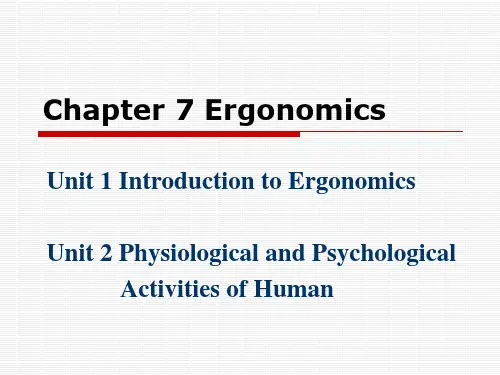工业工程专业英语PPT课件
- 格式:ppt
- 大小:213.50 KB
- 文档页数:57
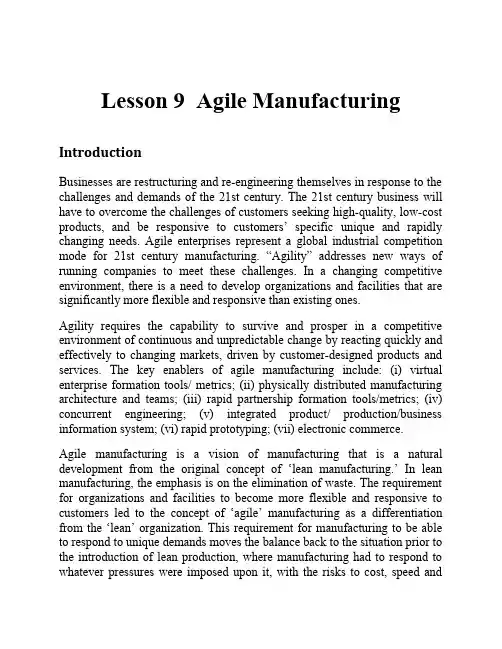
Lesson 9 Agile ManufacturingIntroductionBusinesses are restructuring and re-engineering themselves in response to the challenges and demands of the 21st century. The 21st century business will have to overcome the challenges of customers seeking high-quality, low-cost products, and be responsive to customers’ specific unique and rapidly changing needs. Agile enterprises represent a global industrial competition mode for 21st century manufacturing. “Agility” addresses new ways of running companies to meet these challenges. In a changing competitive environment, there is a need to develop organizations and facilities that are significantly more flexible and responsive than existing ones.Agility requires the capability to survive and prosper in a competitive environment of continuous and unpredictable change by reacting quickly and effectively to changing markets, driven by customer-designed products and services. The key enablers of agile manufacturing include: (i) virtual enterprise formation tools/ metrics; (ii) physically distributed manufacturing architecture and teams; (iii) rapid partnership formation tools/metrics; (iv) concurrent engineering; (v) integrated product/ production/business information system; (vi) rapid prototyping; (vii) electronic commerce.Agile manufacturing is a vision of manufacturing that is a natural development from the original concept of ‘lean manufacturing.’ In lean manufacturing, the emphasis is on the elimination of waste. The requirement for organizations and facilities to become more flexible and responsive to customers led to the concept of ‘agile’ manufacturing as a differentiation from the ‘lean’ organization. This requirement for manufacturing to be able to respond to unique demands moves the balance back to the situation prior to the introduction of lean production, where manufacturing had to respond to whatever pressures were imposed upon it, with the risks to cost, speed andquality. Agility should be based on not only responsiveness and flexibility, but also the cost and quality of goods and services that the customers are prepared to accept. It is, however, essential to link agile capabilities in manufacturing with product needs in the marketplace. Agility as a concept increases the emphasis on speed of response to new market opportunities. Thus, it is more relevant to a One-of-a-Kind Product (OKP) than it is to commodity products that compete primarily on price.Agile manufacturing - definitionsIn this section, we explore a variety of definitions and a range of concepts with the objective of developing a new and feasible concept of AM. The reason for analyzing the present conceptions and definitions of AM is to identify the gap between practice and theory in order to enhance the confidence of practitioners. Manufacturing processes based on agile manufacturing are characterized by customer integrated processes for designing, manufacturing, marketing, and support for all products and services; decision-making at functional knowledge points; stable unit costs; flexible manufacturing; easy access to integrated data; and modular production facilities. The focus is on the integration of critical functional areas with the help of advanced design and manufacturing technologies, and alignment between strategies.The analyses of various definitions and concepts of AM show that all these definitions are polarized in a similar direction. Most definitions and concepts seem to highlight flexibility and responsiveness as well as virtual enterprises and information technologies. However, the question is whether one can achieve agility with minimum investment in technologies and processes. Hence, there is a need to redefine the definition of agility within this context. Figure 9.1 presents the new model for explaining the agile manufacturing paradigm. The model takes into account the characteristics of the market, infrastructure, technologies and strategies. Its purpose is to highlight the new dimension of the definition of the agile manufacturing paradigm. The justifications for the need to redefine the agility are listed below.• In some cases, flexibility and cost are not complementary. Yet, there is a need to consider the cost aspects of agility. Agility without cost effectivenessis not a real competitive strategy. Therefore, there is a need to consider cost in defining agility.• The implications of technologies in achieving agility are paramount compared with partnership formation that is based on core competencies in a virtual enterprise. For certain businesses one needs to identify a set of technologies that are more important to the selected market segments, and to product and service requirements. Yet, the implications of integrating complementary core competencies are highly significant. A lack of focus on utilizing core competencies would not improve productivity and quality.• The nature of a given market certainly defines the characteristics of agile organizations. No organizations can satisfy unlimited product/service requirements of different markets. The characteristics of markets may vary from industry to industry and from country to country.• The implications of e-commerce have not been properly addressed in the development of agile manufacturing systems. Direct input from customers, the reduction in response time and the cost of identifying market requirements using Concurrent Engineering principles would certainly reduce the gap between marketing and production.• Human resources play a significant role in the development of agile manufacturing systems. However, the issue of an agile workforce has not been well addressed. It is still not clear how the agility of the workforce and its characteristics can be defined with reference to changing market requirements and value-adding systems.• Logistics play an important role, especially in physically distributed virtual enterprises. Therefore, due attention should be paid to the effective management of logistics and, in tum, to supporting agility in manufacturing.Figure 9.l Agile manufacturing paradigmBased on some of these observations, agility in manufacturing may be defined as: The capability of an organization, by proactively establishing virtual manufacturing with an efficient product development system, to (i) meet the changing market requirements, (ii) maximize customer service level and (iii) minimize the cost of goods, with an objective of being competitive in a global market and for an increased chance of long-term survival and profit potential. This must be supported by flexible people, processes andtechnologies.第九课敏捷制造介绍企业重组和再造自己以应对21世纪的挑战和要求。

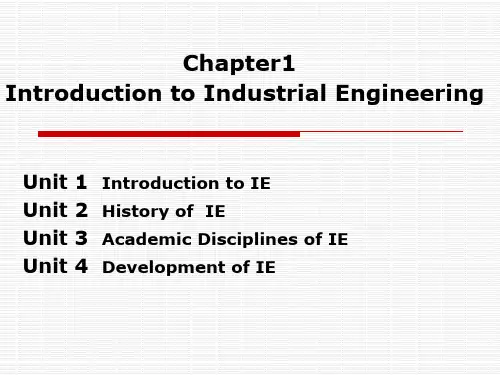
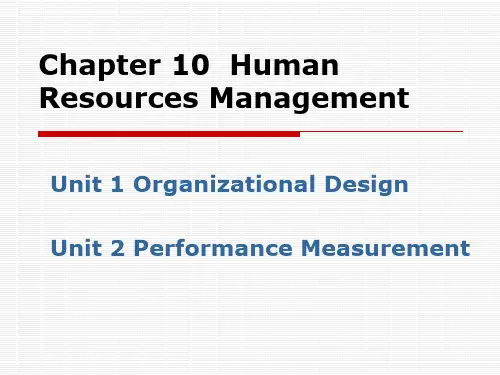
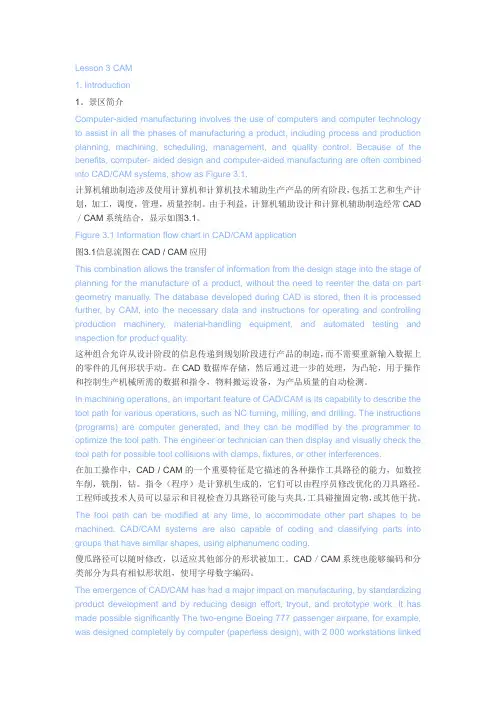
Lesson 3 CAM1. Introduction1。
景区简介Computer-aided manufacturing involves the use of computers and computer technology to assist in all the phases of manufacturing a product, including process and production planning, machining, scheduling, management, and quality control. Because of the benefits, computer- aided design and computer-aided manufacturing are often combined into CAD/CAM systems, show as Figure 3.1.计算机辅助制造涉及使用计算机和计算机技术辅助生产产品的所有阶段,包括工艺和生产计划,加工,调度,管理,质量控制。
由于利益,计算机辅助设计和计算机辅助制造经常CAD /CAM系统结合,显示如图3.1。
Figure 3.1 Information flow chart in CAD/CAM application图3.1信息流图在CAD / CAM应用This combination allows the transfer of information from the design stage into the stage of planning for the manufacture of a product, without the need to reenter the data on part geometry manually. The database developed during CAD is stored, then it is processed further, by CAM, into the necessary data and instructions for operating and controlling production machinery, material-handling equipment, and automated testing and inspection for product quality.这种组合允许从设计阶段的信息传递到规划阶段进行产品的制造,而不需要重新输入数据上的零件的几何形状手动。
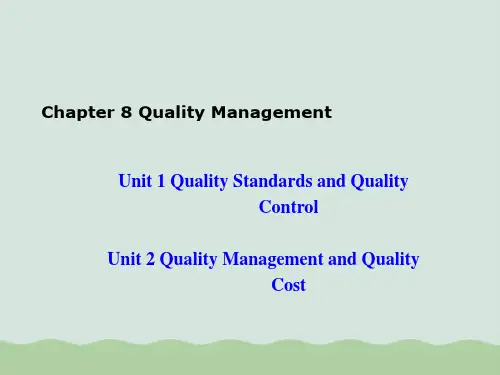
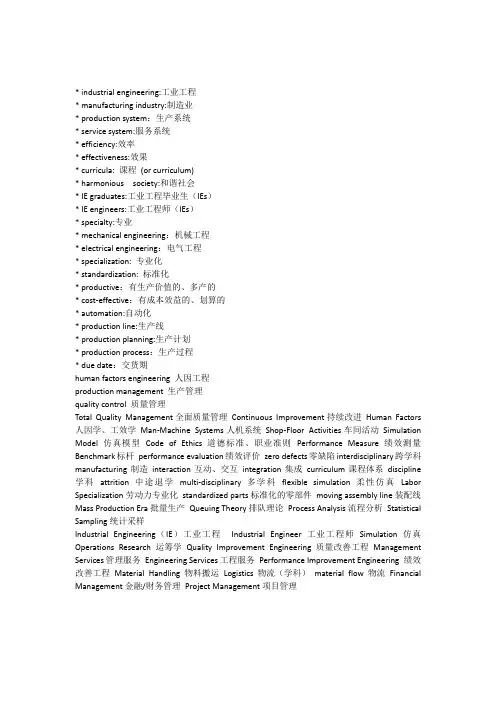
* industrial engineering:工业工程* manufacturing industry:制造业* production system:生产系统* service system:服务系统* efficiency:效率* effectiveness:效果* curricula: 课程(or curriculum)* harmonious society:和谐社会* IE graduates:工业工程毕业生(IEs)* IE engineers:工业工程师(IEs)* specialty:专业* mechanical engineering:机械工程* electrical engineering:电气工程* specialization: 专业化* standardization: 标准化* productive:有生产价值的、多产的* cost-effective:有成本效益的、划算的* automation:自动化* production line:生产线* production planning:生产计划* production process:生产过程* due date:交货期human factors engineering 人因工程production management 生产管理quality control 质量管理Total Quality Management全面质量管理Continuous Improvement持续改进Human Factors 人因学、工效学Man-Machine Systems人机系统Shop-Floor Activities车间活动Simulation Model仿真模型Code of Ethics道德标准、职业准则Performance Measure绩效测量Benchmark标杆performance evaluation绩效评价zero defects零缺陷interdisciplinary跨学科manufacturing制造interaction互动、交互integration集成curriculum课程体系discipline 学科attrition中途退学multi-disciplinary多学科flexible simulation柔性仿真Labor Specialization劳动力专业化standardized parts标准化的零部件moving assembly line装配线Mass Production Era批量生产Queuing Theory排队理论Process Analysis流程分析Statistical Sampling统计采样Industrial Engineering(IE)工业工程Industrial Engineer工业工程师Simulation仿真Operations Research运筹学Quality Improvement Engineering质量改善工程Management Services管理服务Engineering Services工程服务Performance Improvement Engineering 绩效改善工程Material Handling物料搬运Logistics物流(学科)material flow物流Financial Management金融/财务管理Project Management项目管理Industrial engineering is a branch of engineering that concerns with the development, improvement, implementation and evaluation of integrated systems of people, money, knowledge, information, equipment, energy, material and process. It also deals with designing new prototypes to help save money and make the prototype better. Industrial engineering draws upon the principles and methods of engineering analysis and synthesis, as well as mathematical, physical and social sciences together with the principles and methods of engineering analysis and design to specify, predict and evaluate the results to be obtained from such systems. In lean manufacturing systems, Industrial engineers work to eliminate wastes of time, money, materials, energy, and other resources.Industrial engineering is also known as operations management, management science, systems engineering, or manufacturing engineering; a distinction that seems to depend on the viewpoint or motives of the user. Recruiters or educational establishments use the names to differentiate themselves from others. In healthcare, for example, industrial engineers are more commonly known as management engineers or health systems engineers.The term "industrial" in industrial engineering can be misleading. While the term originally applied to manufacturing, it has grown to encompass virtually all other industries and services as well. The various topics of concern to industrial engineers include management science, financial engineering, engineering management, supply chain management, process engineering, operations research, systems engineering, ergonomics, value engineering and quality engineering.Examples of where industrial engineering might be used include designing a new loan system for a bank, streamlining operation and emergency rooms in a hospital, distributing products worldwide (referred to as Supply Chain Management), and shortening lines (or queues) at a bank, hospital, or a theme park. Industrial engineers typically use computer simulation, especially discrete event simulation, for system analysis and evaluation.工业工程是一个涉及人们、资金、知识、信息、设备、能源、材料和过程集成系统的开发、改进、实施和评价的工程分支。
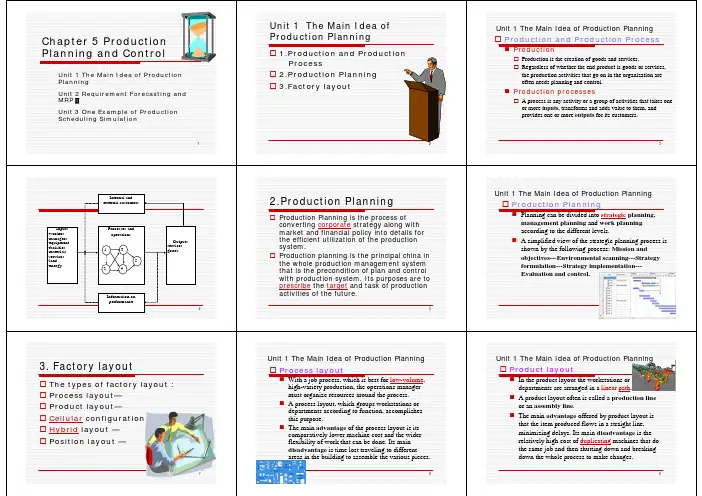
6Unit 1 The Main Idea of Production PlanningProduction PlanningPlanning can be divided into strategic planning , management planning and work planning according to the different levels.A simplified view of the strategic planning process is shown by the following process: Mission and objectives---Environmental scanning---Strategy formulation---Strategy implementation---Evaluation and control.7configuration 8Unit 1 The Main Idea of Production Planning Process layoutWith a job process, which is best for low-volume , high-variety production, the operations manager must organize resources around the process. A process layout, which groups workstations or departments according to function, accomplishes this purpose.The main advantage of the process layout is its comparatively lower machine cost and the wider flexibility of work that can be done. Its main disadvantage is time lost traveling to different areas in the building to assemble the various pieces.Unit 1 The Main Idea of Production PlanningIn the product layout the workstations or path .production line offered by product layout is that the item produced flows in a straight line,11Unit 1 The Main Idea of Production Planning Hybrid layoutA hybrid layout uses an intermediate strategy, in which some portion s of the facility are arranged in a process layout and other arranged in a product layout.Fixed position layoutThis arrangement the product is fixed in place,workers along with their tools and equipment, come to the product to work on it.13Unit 1 The Main Idea of Production Planning Factory Layout and Planning ActivitiesMachines and AccessoriesNew Types of Factory LayoutThree approaches to layout design address three distinctneeds of the flexible factory.The first two approaches present novel layout configurations,namely distributed and modular layout.In the third approach, we use operational performance as adesign criterion to generate what term agile layout.Designing the forecasting system20Unit 2 Manufacturing Resources Planning 2 Master Production SchedulingThe mater production scheduling is effectively the company has developed for production, staffing , inventory, etc.The production plan may be broken down into several component parts:The master production scheduling (MPS)The material requirements planning (MRP) system The detailed job shop schedules.At the heart of the production plan are the forecasts of demand for the end items produced over the planning horizon .Manufacturing Resource Planning 23retail complicated because some components may be subject to both dependent and independent demand.Unit 2 Manufacturing Resources Planning Benefits of Material Requirements 26Unit 2 Manufacturing Resources Planning Manufacturing Resource Planning (MRP II)MRP II includes the following four major developments from MRP:Resource Scheduling Software Extension Programs30Competitors are gaining by using a new New technologies are available.31Production Process Control Options Traditional Batch Production : Performance Measures :32circular nature 33SummaryUnit 1 The Main Idea of Production PlanningUnit 2 Requirement Forecasting and MRP ⅡUnit 3 One Example of Production Scheduling Simulation。
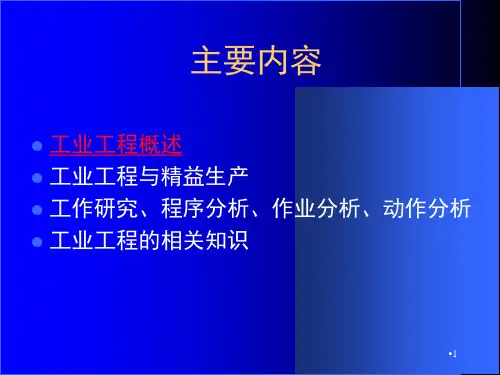
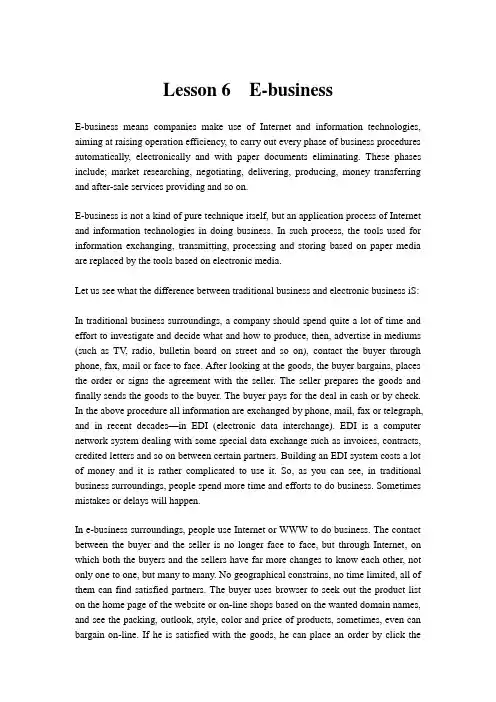
Lesson 6 E-businessE-business means companies make use of Internet and information technologies, aiming at raising operation efficiency, to carry out every phase of business procedures automatically, electronically and with paper documents eliminating. These phases include; market researching, negotiating, delivering, producing, money transferring and after-sale services providing and so on.E-business is not a kind of pure technique itself, but an application process of Internet and information technologies in doing business. In such process, the tools used for information exchanging, transmitting, processing and storing based on paper media are replaced by the tools based on electronic media.Let us see what the difference between traditional business and electronic business iS:In traditional business surroundings, a company should spend quite a lot of time and effort to investigate and decide what and how to produce, then, advertise in mediums (such as TV, radio, bulletin board on street and so on), contact the buyer through phone, fax, mail or face to face. After looking at the goods, the buyer bargains, places the order or signs the agreement with the seller. The seller prepares the goods and finally sends the goods to the buyer. The buyer pays for the deal in cash or by check. In the above procedure all information are exchanged by phone, mail, fax or telegraph, and in recent decades—in EDI (electronic data interchange). EDI is a computer network system dealing with some special data exchange such as invoices, contracts, credited letters and so on between certain partners. Building an EDI system costs a lot of money and it is rather complicated to use it. So, as you can see, in traditional business surroundings, people spend more time and efforts to do business. Sometimes mistakes or delays will happen.In e-business surroundings, people use Internet or WWW to do business. The contact between the buyer and the seller is no longer face to face, but through Internet, on which both the buyers and the sellers have far more changes to know each other, not only one to one, but many to many. No geographical constrains, no time limited, all of them can find satisfied partners. The buyer uses browser to seek out the product list on the home page of the website or on-line shops based on the wanted domain names, and see the packing, outlook, style, color and price of products, sometimes, even can bargain on-line. If he is satisfied with the goods, he can place an order by click thekeyboard or by e-mail. The seller immediately receives the message. If he accepts the order, he can use Internet or WWW to arrange goods production, distribution as well as payment (called electronic funds transfer (EFT)). All data is transmitted just in time and business operation becomes more efficient. The procedure shows in Figure 6.1. You can see that e-business has changed the way of doing business and the way of consuming.Information Packing Out look Style Color PriceSeller Production Distribution BuyerInformationOrder PaymentFig 6.1 The procedure of E-businessDoes it mean that company does not need as many people as before? The answer is not absolute. But one thing is sure that the company can utilize the human resource better and make operations more efficient, because a-business let the data be processed and transmitted automatically, immediately and turn out the data for further business decision making in real time. But anyway, the whole e-business system needs men to maintain and manipulate. Daily business decisions can’t be made without experienced and capable men. So we must realize one thing: even in e-business environment, business still plays the major role, modern electronic transmission mediums are only the tool that can be more efficient, provide faster and better customer service, lower production cost and reduce business cycle time.The concept of e-business was first emerged at the beginning of 1990s. In 1980s, some large companies and banks exchanged business data and information with each other by using their own computer systems through connected network. This system is called EDI (Electronic Data Interchange) system. During the past 20 years, the application of EDI in advanced countries had increased rapidly, almost in every business field, and it had actually shortened the time taken for order-ship-bill cycle and reduced the mistake and delays. The EDI’s wide ap plication has also promotedthe development of information technologies. That was the primary stage of e-business. EDI only allowed pre-established trading partners to exchange business data. To use EDI, the company must equip with a rather expensive electronic translation system. Many small or middle-sized companies can’t afford to use it. Another restraint is that EDI system belongs to certain companies, a new partner can’t use it before being approved. Besides, the application of EDI doesn’t lead to some great changes in traditional business.In 1995, the business application of Internet and the invention of World Wide Web (WWW) brought the true meaning to e-business. Internet or WWW doesn’t belong to any person or company. It somewhat likes highways. You can use it if you pay the fee. Sometimes it is free. So you don’t need to build up an expensive system, you only need to buy a computer, a modem and browser software, open an account on Internet or WWW. From this point, e-business is viewed as a new generation of EDI, and e-business can do more.WWW is only invented a few years ago, but it has developed so fast that no one can ignore it. It provides the basic condition to business for applying e-business, and opens a new channel of sales, distribution and cooperation to business. A piece of news from newspaper said, 34% of American families have the experience of using Internet, among them 54 million people use Internet or WWW to do business. Although the situation in China is not so optimistic as that in U.S.A., but it is true that e-business becomes one of the hot topics in the year of 2000.Those above facts have improved that e-business is not the flash in the pan, but a trend, a great innovation of the way of people’s working and living. The potentia l capability and future market of e-business is great, and it will be a main business channel in the next century.6电子商务课电子商务意味着企业利用互联网和信息技术,旨在提高运行效率,自动执行业务过程的每一个阶段,电子和纸质文档消除。
